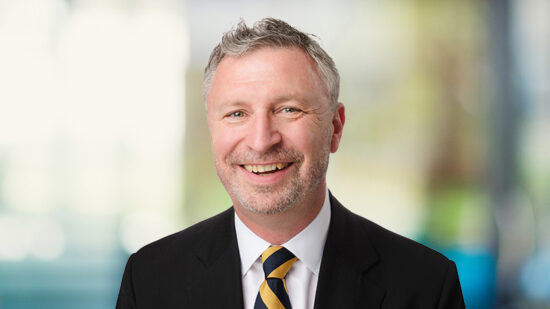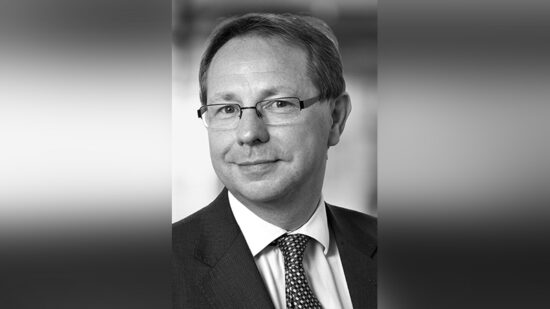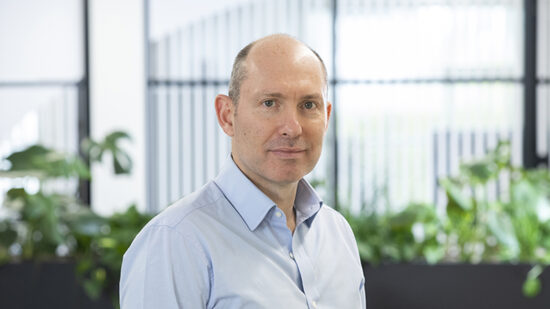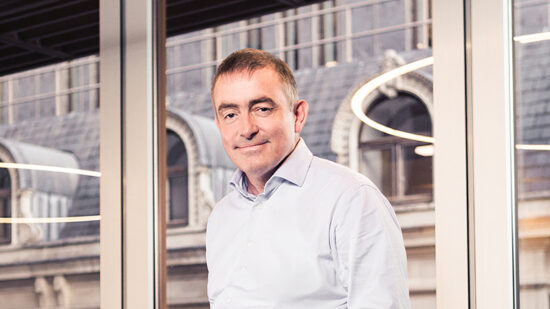Having once suffered what some might call the ignominy of being photographed by the Evening Standard leaving Lehman Brothers’ offices with a cardboard box of his possessions, Richard Bonnor-Moris knows more than most how financial services can go wrong.
Working at the bank’s asset management division until its collapse in 2009, head of multi-asset solutions Bonnor-Moris came to Newscape Capital Group with a fresh approach that led it to become one of the first wealth managers to offer model portfolios on platforms.
Growing organically through an IFA client base, the first idea for Newscape – founded by CEO Stephen Decani – was to specialise as a fixed income house.
“The belief then was that, post-financial crisis, fixed-income would continue to be as big an asset class as it obviously had become, but less dominated by the big players,” says Bonnor-Moris.
“That was probably wrong as it turns out the big players have actually got bigger in fixed income. We were then approached by a client to do multi-asset in 2009, so it was somewhat by chance that we moved into that space.”
The right level
Newscape does not have private client permissions, rather its approachto multi-asset is through model portfolios.
“I have always had a belief that if someone has £10k to invest or £10m, while they are likely to think of themselves as incredibly important and special, their risk/return characteristic is as varied,” adds
Bonnor-Moris.
“You can get people investing £10k or £10m who both want to take all the risk, and vice versa. The most important factor for us is to make sure the portfolio provides the best risk-adjusted return at the given level of risk they believe they can take.”
Newscape offers five different riskrated portfolios, from cash plus to equity minus, as well as an income mandate.
Given the regulator’s recent focus on cost pressures, the firm sensibly offers two types of solution.
One is ‘all market’, which launched in September 2009 – two-thirds active managers with a TER of between 60-80 bps.
Second, in January 2013 there was the launch of a low-cost solution with a maximum TER of 30 bps, which is more than 90% in passive solutions.
The end of passive
It is the low-cost passive approach that Bonnor-Moris says has performed the best since launch, though he is less convinced this will continue going forward.
“I don’t know how long this market favouring passive investing will last, but we’ve seen it before, especially at the end of the ’90s, and we all know how that ended,” he says.
“In a dislocated market around the world in the likes of the US, Europe, Japan, China and India, these events are not going to favour passive investing over the next few years.”
He adds: “We do have some active managers that have outperformed but the majority haven’t. Last year was a classic case, particularly in fixed income, where managers have underperformed rising benchmark returns. The best bet to make last year was 30-year US Treasury bonds but I don’t know a soul who thought that was the case at the time. Anyone who said they did is probably lying.”
A popular stance for wealth managers today is to be ‘cautiously optimistic’ and Bonnor-Moris is no exception in this regard. He sees the possibility of another year of reasonable returns, but with danger ahead.
“We tend to have a fairly longterm strategic asset allocation that is quant-based, which we steer our portfolios within maximum and minimum allocations,” he says.
“But we are quite broad in where we can go. In 2011, our balanced portfolio had 18% in equities, and by the end of 2013 it was 68%. We are currently over 50% so we are not being bearish yet, but if I was to give a prediction where our next move would be, it would be a reduction.”
All about alternatives
Within equities, the team is increasingly looking towards alternative long/short strategies to take advantage of this market ‘dislocation’.
Current favourites include Carmignac Patrimoine European and RWC Europe Absolute Alpha. From a global perspective, there is an allocation to Ardevora Global Equity.
In the US, success has come through an allocation to Legg Mason ClearBridge US Aggressive Growth, a fund with an average holding period of nearly 20 years that is currently overweight energy and healthcare.
Elsewhere, Hermes Asia ex Japan has added alpha in a difficult environment for the region, while Schroder Tokyo is a defensive choice in Japan.
“Last year had challenging performances from some of our UK managers – SVM UK Growth and Cavendish Opportunities – but they had stellar years in 2013, Bonnor-Moris adds.
“We have been underweight the UK for a long time compared with our competition, which is a characteristic of us being more global in approach.”
In emerging market equities, the models had an allocation to “the big guys”, First State and Aberdeen, in 2013. This has since changed to the likes of JP Morgan Emerging Income and Carmignac Discovery, the latter a more “left-field” choice.
Bonnor-Moris says: “They are happy to go into new opportunities within the big markets, China and India, if they found a company that was doing something interesting. But what they won’t do is allocate to the large caps in those countries.”
Beta testing
There is also allocation to a smart beta fund in emerging markets, Henderson Row FTSE RAFI EM.
“Smart beta makes unambiguous sense but it can cause problems in a world that is so dependent on looking at capitalisation-weighted benchmarks,” says Bonnor-Moris.
“There will never be a massive differential but if there is an outperformance then people just say that’s because it’s smart beta, whereas if there is underperformance then people just pull the money too quickly.
“The fact is that all the numbers show that smart beta outperforms cap-weighted over almost any period apart from very short periods, so that should tell you to keep invested.”
Within fixed income, the team has increasingly gone to the very popular unconstrained mandates, such as Legg Mason Western Asset Macro Opportunities run by Kenneth Leech, and a mandate from Franklin Templeton’s Michael Hasenstab. Another is Fidelity Strategic Bond run by Ian Spreadbury.
Bonnor-Moris adds he is not afraid of making some more speculative investments:
“We bought BlackRock Global Mining halfway through December last year because we saw the valuation of it and the underlyings looking attractive.
“There is no doubt that taking positions like that is something we would do in our higher-risk portfolio. It’s a small allocation but a good story that fits in with our view that the market is irrational in some cases.”
Defining terms
Given his banking heritage, it is understandable that a Bonnor-Moris principle is to “never lose more money than it says on the tin”.
He concludes: “Our funds all come with a target return, target volatility and a maximum loss. While it is impossible to guarantee any of those things, including maximum loss, the first two are very ambiguous, i.e. what does total return actually mean, and over what time period? And what does total vol mean? I can give you 50 different ways of calculating volatility.
“We take maximum loss very seriously. It’s unambiguous. We look at VAR a lot in our portfolios, allowing a calculation on different timescales, and this allows us to see what the worst-case scenario for our portfolios is.
“That tends to make us more cautious than we would otherwise normally be. Last year, all of our portfolios were at the bottom end or below the minimum vol for all our portfolios, but it didn’t concern us because the VAR level was consistent with what we told our clients.”







